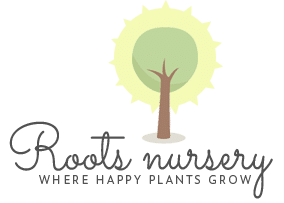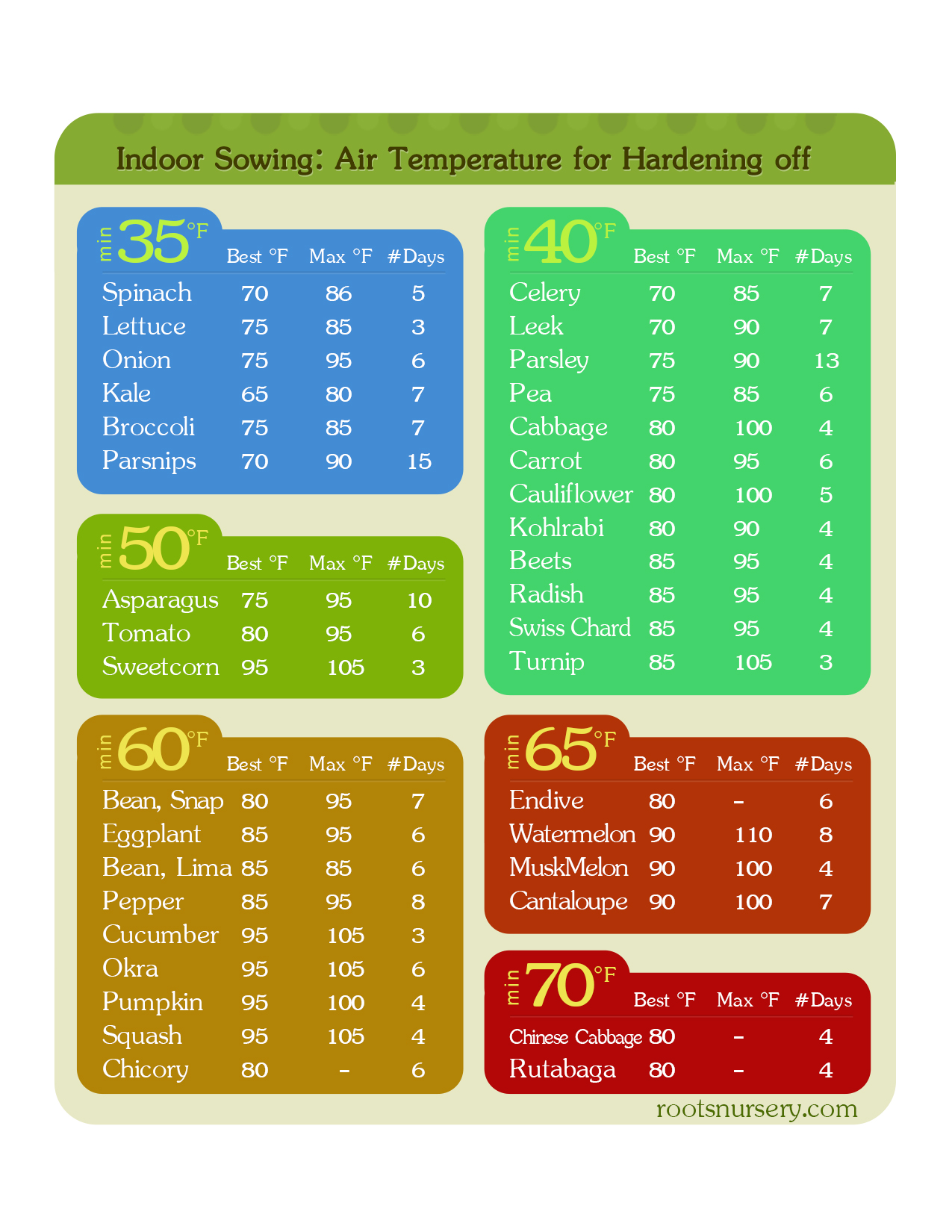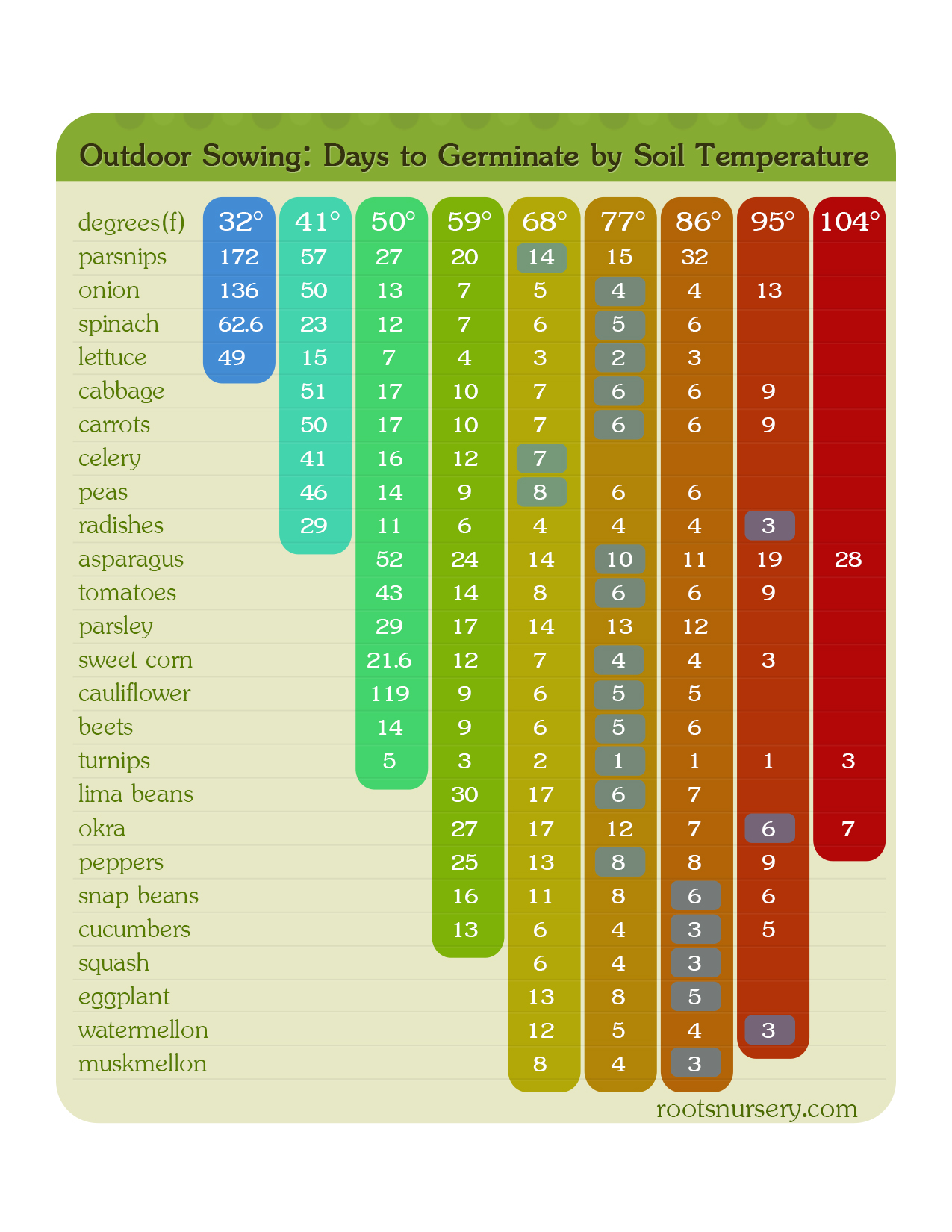Knowing when to plant vegetable seeds has always caused confusion. A good rule of thumb is to plant by temperature. I put together these handy charts for you to download and print. Refer to them often and enjoy healthy plants all season!
GIVE A GIFT TO THAT SPECIAL GARDENER FRIEND: Print them out on thick paper and glue them back to back with a glue stick. Attach to a seed packet or two and your friend will love you!
Now You Know When to Plant Vegetable Seeds!
Dont see your plant on the chart? Try these seed starting calculators.
Johnnys Seed Starting Calculator Seeds and flowers by last frost date
All Things Plants Calculator Vegetable seeds only by zip code.
Now that you know when to plant vegetable seeds, the rest is about the soil.
It doesn’t really matter what type of seeds you start if you don’t have good soil. The health of your plants, their disease and insect resistance, and the nutrition of your vegetables starts with the soil. If you’re interested in growing great plants, add compost to your garden.
When you start a garden, all of those things you used to bag up and put at the end of the driveway now becomes a precious resource. You’ll never consider throwing away leaves and grass clippings again.
These things dont have to be totally broken down to add to your garden either. The plants dont really care if leaves or grass clippings are brand new or a year old. It only helps to feed, protect, and retain water. Some say the nitrogen from grass clippings will burn your plants, but I’ve done it so many times and it never hurt any of my plants.
The trick is to not pile it on too close to the stem or crown of the plant. This way your plants dont suffocate and you get all of the loving goodness our yard debris can bring.
The rule of thumb is to add at VERY MINIMUM 3″ of rich organic compost to the top of your garden each year. Like I said, it doesnt have to be fully broken down either. The thing to remember is that you need a LOT of compost, every year, all year long. You’ll be amazed at how quickly the soil life eats away at your compost and it totally disappears.
If you want to try your hand at composting, it really is fun. Watching all of that garbage melt into gardening gold. I’ve learned a lot from my experiments in making compost.
I can tell you honestly, every year I get a little lazier. The more I learn how little the plants care about how their food is made, to more I realize that hauling around wheelbarrows full of compost is for the birds. I now almost always compost in place.
That means, I put the stuff right where its supposed to go. Instead of piling it up, turning it, airing it, watering it, shoveling it, hauling it and spreading it out. I just put it in the garden. I’m sighing in relief just thinking about it.
If you’re just starting out, or have terrible soil, it might be easier to start with raised beds and create your own soil.
Here are some more posts I’ve written about great garden soil.
Killer Garden Soil that Grows Plants Like Crazy
Three Easy DIY Soil Tests
Old Compost and the Surprise Tomatoes
and for raised beds check out Square Foot Gardening


